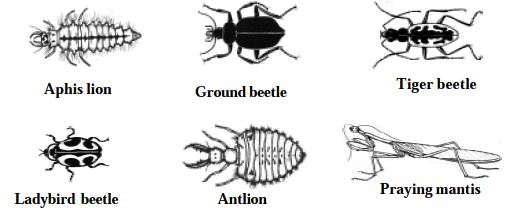Phylum Arthropoda are the most successful group of animals. They outnumber all other animals in population strength. The body is segmented. It is covered by a hard exoskeleton made of chitin. During growth the exoskeleton is shed (moulting of ecdysis). The legs or paired appendages are jointed. The head region has a pair of prominent compound eyes. Each compound eye is made up of several photoreceptor sub units called Ommatidia.
They have an open circulatory system without vessels. The body cavity is filled with a fluid called haemolymph. Such body cavity is known as haemocoel. These are unisexual, exhibiting sexual dimorphism. The young forms produced are invariably called the larvae. The larvae undergo metamorphosis and develop into adults.
This Phylum Arthpoda comprises five Classes,
Class Onychophora: It includes small worm like Peripatus. Peripatus shows Annelidan and Arthropoda characters. Hence this may be considered as a connecting link between the two groups.
Class Crustacea :- The examples for this class are prawns, crabs and lobsters. The dorsal body surface is covered by a sheild like carapace.

Class Myriapoda :- It includes centepedes and millipedes. These organ-isms have a distinct head and simple eyes. The centepedes have a pair of poison claws. The body consists of numerous segments, bearing pairs of legs.

Class Insecta :- It comprises the common insects. The body is divided into head thorax and abdomen.In several insects, the adults have two pairs of wings on the thorax. Respiration happens through the tracheal system.
Class Arachnida :- It includes scorpions, spiders, ticks and mites. The body is divided into cephalothorax and abdomen. There are four pairs of legs attached to the cephalothorax.










